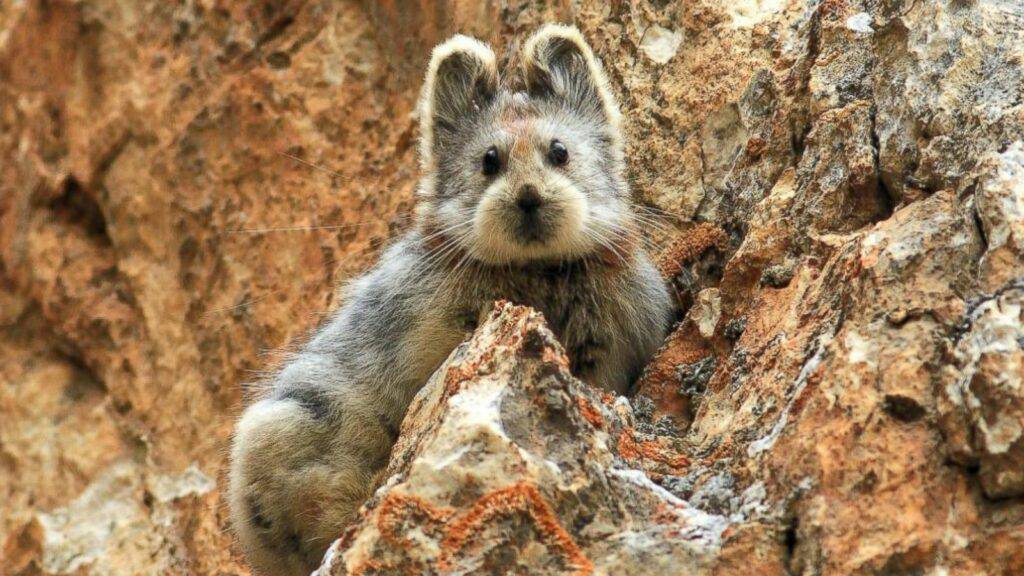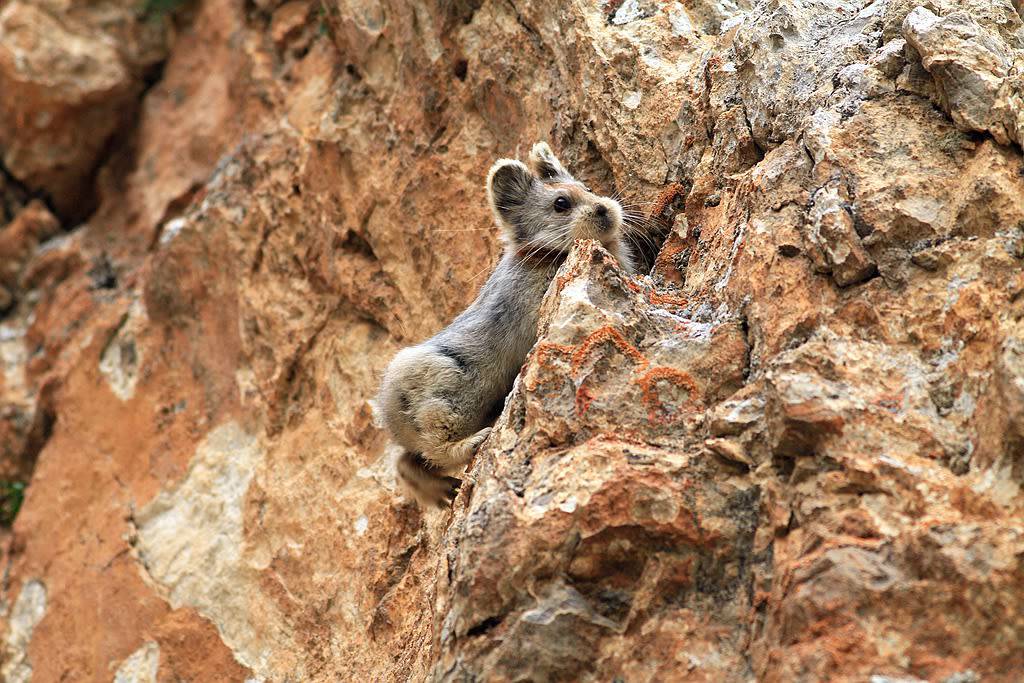Why is the Ili pika disappearing?

The Ili pika (Ochotona iliensis), affectionately known as the “magic rabbit”, is a small and elusive mammal native to the Tianshan Mountains of northwestern China. First discovered in the ’80, the Ili pika has garnered attention for its adorable appearance and mysterious behavior. Unfortunately, this captivating creature is facing the threat of disappearance, raising concerns among researchers and conservationists.
The Enigmatic Ili Pika
Discovered in 1983 by Chinese scientist Li Weidong, this small mammal, part of the Ochotonidae family, quickly captured the hearts of researchers and nature enthusiasts alike. With its endearing appearance, featuring a compact, round body, large eyes, and a distinctive coat of fur, the Ili pika has earned its nickname as the “magic rabbit“.
The Ili pika’s unique habitat further adds to its enigma. Inhabiting the high-altitude rocky slopes of the Tianshan Mountains, these creatures have evolved to navigate the challenges of their environment. Despite the harsh conditions, the Ili pika has carved a niche for itself, demonstrating remarkable adaptability. Their burrows and rocky crevices serve as sanctuaries from predators and harsh weather, showcasing the resourcefulness that has allowed them to survive in this demanding terrain.
Researchers have marveled at the Ili pika’s behavior, characterized by a seemingly perpetual expression of curiosity. Limited studies and observations have revealed their social interactions, communication patterns, and distinctive vocalizations, adding layers to the fascination surrounding these creatures. The Ili pika, with its endearing features and mysterious behaviors, has become an emblem of biodiversity, reminding us of the wonders that thrive in the remotest corners of our planet.
Climate Change and Habitat Shifts
The Ili pika, well-adapted to the harsh conditions of high-altitude rocky terrains, now faces a conundrum. As temperatures climb, their natural habitats become less hospitable. The rocky slopes that once provided a perfect balance of temperature and shelter are undergoing transformations beyond the pika’s ability to adapt. A forced migration to higher elevations in search of cooler climates may lead them to the upper limits of habitable terrain.
The vegetation on which the Ili pika relies for sustenance may shift or dwindle, leaving them with limited foraging options. The delicate balance between predator and prey, which has evolved over millennia, is upset as the Ili pika struggles to find adequate food sources in the changing landscape. This resource scarcity not only affects their immediate survival but also has cascading effects on the entire ecosystem.
Extreme weather events, such as sudden storms or prolonged droughts, pose additional challenges for the Ili pika. Their ability to adapt to these rapid changes is limited, as their evolutionary history has shaped them to thrive in stable and predictable environments.

Habitat Loss and Human Activities
As human populations expand, urbanization and infrastructure development encroach upon the Ili pika’s natural habitat. The construction of roads, dams, and other infrastructural projects fragments the landscape, isolating populations and limiting their access to crucial resources. The once undisturbed rocky outcrops, which served as both shelter and a source of sustenance, are now replaced by concrete and human structures.
Agricultural activities, a vital component of human livelihoods, have expanded into the territories traditionally inhabited by the Ili pika. The conversion of land for farming not only reduces the available space for these creatures but also disrupts the delicate balance of the ecosystem. Deforestation, often accompanying agricultural expansion, further exacerbates the problem, depriving the Ili pika of the vegetation cover essential for their survival.
The Role of Human Disturbance
The allure of the Tianshan Mountains attracts a growing number of tourists eager to witness the region’s natural beauty, including the elusive Ili pika. Unfortunately, the influx of visitors can have unintended consequences. Human presence, noise, and disruption can disturb the Ili pika’s natural behavior, leading to stress and potential changes in their habits. Frequent encounters with humans may force the Ili pika to alter their foraging and nesting patterns, ultimately affecting their ability to thrive in their native habitat.
Paradoxically, the very interest in observing the Ili pika may indirectly contribute to the environmental changes that threaten their existence. The development of tourism infrastructure, such as trails, viewing platforms, and accommodations, may inadvertently alter the Ili pika’s habitat. Construction activities can disrupt the rocky landscapes that serve as the pika’s home, leading to habitat degradation and fragmentation. These alterations can further isolate populations, reducing the available space for foraging and increasing their vulnerability to predation.
Conservation Status
Recent surveys paint a disheartening picture of the Ili pika’s current status in its native habitat within the Tianshan Mountains. Disturbingly, no Ili pikas were observed during extensive surveys, with the presence of pikas, as indicated by signs, varying significantly among the surveyed sites. The absence of fresh signs at eight out of the 14 sites, including key locations like Telimati Daban, Qurgo Valley, and Jilimalale Mountain, raises alarming concerns about the disappearing population of these enigmatic creatures.
The overall findings from the survey suggest a bleak outlook for the Ili pika population. Not only have they disappeared from 57% of previously occupied sites, but populations have also declined in the remaining three regions surveyed. The estimated decrease in the area of occupancy from about 17% to 7% of the maximum potential extent within the past decade underscores the urgent need for comprehensive conservation efforts to halt and reverse the decline of the Ili pika population in the Tianshan Mountains.










